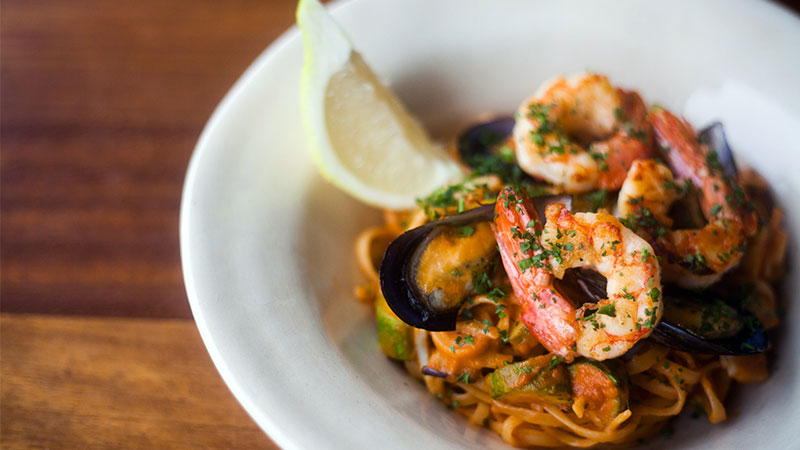If you are looking for a healthier alternative to table salt, consider switching to Himalayan pink salt. It is much lower in sodium per teaspoon, has iodine, and has a higher price tag. But what is the difference between Himalayan salt and table salt? How do you decide whether you should switch? Read on to learn more about this alternative to table salt. We will also discuss why Himalayan salt is more expensive.
It's a healthier alternative to table salt
Although you may think that Himalayan salt isn't a healthy alternative to table, some people swear by its many benefits. Aside from being a tasty alternative to regular table salt, it also contains important trace minerals such as iodine. Most people in the U.S. use iodized salt, but the pink Himalayan salt contains trace minerals too. For this reason, you may need to look elsewhere to get enough iodine.
As far as the health benefits of Himalayan salt go, the iodized variety is fine. Celtic salt comes from the Celts and is found in Hawaii and Guatemala. However, there is no scientific reason why you should replace table salt with pure sea salt. Excessive amounts of salt can raise blood pressure, lead to kidney disease, and affect the health of your brain. So, while iodized salt is generally okay, you can make your choice based on personal preference.
Himalayan salt has many benefits over table-salt. It contains trace minerals that give it a pink color. The trace minerals give it a distinct taste. It is used for seasoning food, cooking surfaces, cutting boards, and more. Some people even use the pink salt as bath salts. There are even lamps made of this salt. These are the benefits of using Himalayan salt instead of table salt!
The minerals in Himalayan salt are important for healthy body pH and blood pressure. It also prevents dehydration and helps balance electrolytes. It also improves circulation, helps maintain healthy blood pressure, and may even help boost libido. If you're looking for a healthier alternative to table salt, you should definitely check out Himalayan salt. It will do wonders for your health!
Besides reducing sodium in your diet, pink Himalayan salt can also improve your health. Several studies have shown a direct relationship between sodium and obesity. One gram increase in salt intake in adults and children is associated with a twenty-five percent increase in obesity risk. While you shouldn't be worried about the health benefits of Himalayan pink salt, it's worth checking out the many reviews online to see if it's worth the money.
It contains iodine
Despite the fact that it contains iodine, Himalayan salt contains a lesser amount of the mineral than other types of salt. This is an important distinction to make when comparing different salts, which can be beneficial to different types of diets. If you are suffering from Iodine deficiency, this salt can be an effective treatment. Pickling salt, on the other hand, has a much stronger flavor and is used in pickles, while Himalayan salt is more subtle and sweeter in taste.
The iodine in Himalayan salt is naturally occurring, as opposed to those in table and sea salt. You do not need to consume this mineral in large amounts, because you can get it from other sources. Salts that are processed through chemical processes have been stripped of trace minerals such as iodine and replaced with iodine, which is not good for your health. However, if you are concerned about the lack of iodine in Himalayan salt, you can add iodine supplements to your diet.
Himalayan salt is a natural mineral. It comes from the Himalayan mountains, which are among the highest in the world. These mountains were once seabed, but after India was pushed into the continent, the mountains dried up inside the sea and left behind a deposit of salt. Now, this salt is found in stores, and it is becoming a popular alternative to table salt. You may be wondering, "Does Himalayan salt contain iodine?"
Iodine is naturally found in salt compounds, including table salt. The pink Himalayan salt composition of salt contains iodine, but it is not enough to meet the requirements of pregnant and lactating women. Table salt contains iodine, but you can get some of it by eating foods grown in iodine-rich soil. Moreover, some sea salts are considered organic, meaning they do not contain any trace minerals.
Compared to table salt, Himalayan salt contains iodines and trace minerals. This is beneficial because iodine is an essential nutrient for the body. Moreover, iodized salt only contributes a fraction of the daily requirement for an adult. However, it provides more sodium than iodine. In addition to sodium, Himalayan salt also contains iodine.
It has less sodium per teaspoon
Himalayan salt is much lower in sodium per teaspoon compared to other varieties of salt. This is partly due to the smaller size of the crystals, which reduces bulk density. Additionally, it has fewer sodium molecules per cubic meter, which means less sodium is applied in total. The difference between these two salts is significant, as table salt has approximately 600 milligrams of sodium per teaspoon, while pink salt has only 420 milligrams.
The results of the study were published in June 2018. Researchers studied the impact of pink salt on mineral contents. The salt was purchased at retail stores in Australia, and p-values were calculated using Tukey's post-hoc test. The researchers found a significant difference in the nutrient content between Himalayan salt and other varieties, with a positive difference in the amount of nutrients per teaspoon. Interestingly, no silver or arsenic were detected in any of the samples.
In addition to being lower in sodium, Himalayan salt is rich in minerals. It contains more than 80 different minerals, including calcium and iron. These minerals support the body's natural detoxification process. It also aids in eliminating bacteria and germs. For people with high blood pressure, Himalayan salt may help lower this number. However, it's important to keep in mind that there is a slight risk of increased blood pressure.
Compared to table salt, Himalayan salt is much lower in sodium per teaspoon. Its pink color indicates it is rich in magnesium, but the level is not high enough to make a noticeable difference. The pink color of Himalayan salt does not alter its nutritional value, however, since it contains less sodium per teaspoon than table salt. Also, this salt is 100 times more expensive than regular table salt. It's difficult to say whether or not the latter is healthier.
Some people prefer Himalayan salt over table salt, because it contains more minerals. While both types of salt contain 98 percent sodium chloride, pink salt has larger crystals. While this is true, the pink salt has a more subtle, saltier flavor than table salt. The pink salt also has a higher content of trace minerals compared to table salt. Therefore, it's better for you to use less salt when cooking and baking.
It's more expensive
You can choose between regular table salt and Himalayan salt for cooking and bathing. The former is typically mined from the Salt Range Hills of Pakistan. The latter is heavily processed and contains additives for health. While both salts have some health benefits, the latter tends to be more expensive. Here are some of the most important benefits of Himalayan salt. If you're wondering which salt is better, consider these benefits:
Pink Himalayan salt is marketed as the purest salt in the world. However, it's also the most expensive type. It's rare and costly, and is increasingly found in spa treatments, specialty foods, and home decor. You can find rock-salt lamps made from prized pink salt at mainstream retailers. Buying this kind of salt is more expensive than generic table salt, but it's worth it if you're interested in adding a luxurious touch to your dishes.
While normal salt is more affordable, the price tag of Himalayan salt may put off some people. Some people believe that the pink salt contains minerals and benefits for the health. That's because the salt is made from 84 different minerals – all of which are essential for proper body functioning. And it doesn't cause high blood pressure, either. As a bonus, it is a natural crystal salt, mined by hand.
While the cost of pink Himalayan sea salt is higher than that of regular table salt, the benefits far outweigh the price difference. For instance, it contains almost 80 different minerals compared to only two percent in regular salt. This makes it a healthier alternative for cooking. However, you'll need to consider the many health benefits of pink Himalayan salt before making a decision. And remember that if you're concerned about your health, it's probably worth the price.
Since the demand for Himalayan salt is so high, it's not hard to find. This natural mineral is only available in Maras, Peru, and the Murray River in Australia. It's highly sought-after because of its purported health benefits. Its unique color makes it stand out from regular salt. It also provides physical proof of the absence of minerals like sulphate, phosphorus, and iron, which are harmful to the body.

